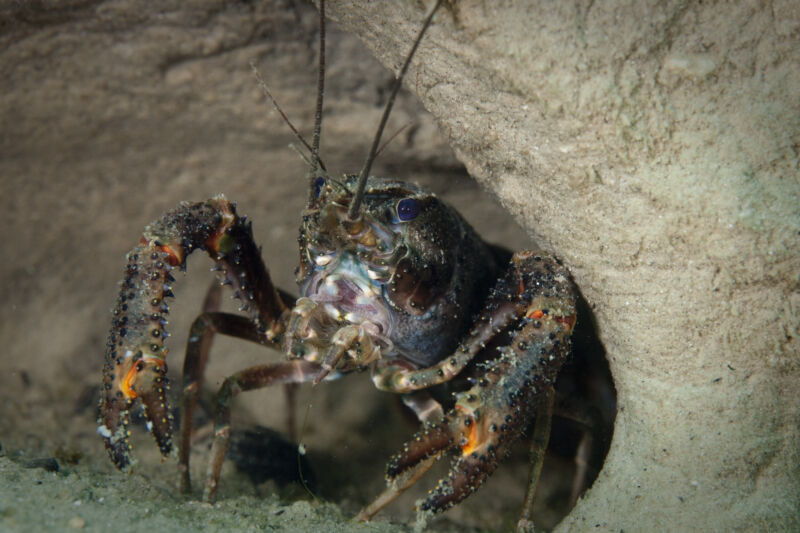
Freshwater crayfish have inhabited New Zealand for millions of years. They have dark, hard, and mottled shells, allowing them to blend in with logs and mud as they seek cover from predators. At night the crustaceans search for food, their strong pincers finding and cutting up fish, mayflies, plants, and snails. They are known here as kōura, a name given to them by the Māori, the Indigenous Polynesian people who first arrived in New Zealand in the 1300s and who now comprise more than 15 percent of the country’s population.
For Māori, the crayfish are economically and culturally significant, both as a delicacy and as part of a traditional value called mahinga kai, which upholds the importance of natural foods, their ecosystems, and the practices of gathering and sustaining them.
Today, kōura populations are on the decline and are considered at risk of becoming threatened due to habitat loss, overfishing, and poor water quality. Makarini Rupene, a mahinga kai expert and cultural land management adviser with the local government of Canterbury, has watched this decline in the country’s South Island. “I was brought up fishing on the rivers, the lakes, the coastline, the ocean,” he said. As a child in the 1970s and ’80s, he learned traditional practices and their relationship with mahinga kai. Now when he returns to the waters of his childhood, he finds few crayfish.
In partnership with the local Māori tribe, researchers from the University of Canterbury embarked on a genetic and genomic study of kōura in 2016. The idea, said Aisling Rayne, the primary author of the study, was to assess the crayfishes’ genetic diversity. Threatened species often live in small, confined populations, where mating among relatives leads to inbreeding. Highly inbred populations are less resilient to environmental stress and changes. Understanding the genetic diversity of local crayfish populations could inform conservation strategies going forward, Rayne said.
Beyond conservation, what makes the study stand out is the inclusion of Indigenous knowledge and practices, and the upholding of the local tribe’s decisions at each research step—from how and where to gather data to how to store and use that data, said sources who spoke with Undark. Billy van Uitregt, a Māori lecturer in environmental studies at Victoria University of Wellington in New Zealand and an evolutionary ecologist, echoed a phrase from the study’s title in summarizing the approach: “looking to the past to navigate the future.”
Since the early 2000s, New Zealand has been incorporating into science a body of knowledge originating from Māori culture, known as mātauranga Māori. This is part of a broader effort by the government to fulfill its promises in the Treaty of Waitangi, an agreement between Māori and British settlers to honor Māori rights. The past two decades have seen more funding and support for research that involves and benefits Māori.
These developments have not been without pushback. Last year, for example, seven researchers at the University of Auckland published a letter arguing that while certain forms of Indigenous knowledge can be helpful, it is not the equivalent of empirical science. Such traditional knowledge “falls far short of what we can define as science itself,” the authors wrote.
The university subsequently distanced itself from the researchers’ views in an email to its staff, but supporters of Indigenous collaborations argue that it's not about knowledge equivalency, but knowledge integration. The kōura study, Uitregt said, was a good example of how the conversation can be repositioned around blending Māori knowledge with modern science.
According to Rayne, the study’s initial goal was to assess the benefits and risks of measuring how well species adapt to their environment. While the study’s funders encouraged the research had to focus on a species of value to Māori, Rayne’s Ph.D. supervisor and one of the study’s co-authors, Tammy Steeves, wanted a different approach in choosing that species. Instead of the researchers’ deciding on the species then engaging with Māori, Rayne “came to the realization that the thing that needed to happen first was to go to the local community.” Through a series of conversations, the tribe confirmed their involvement with the project and identified kōura as a culturally significant species that would benefit from further research.
reader comments
85